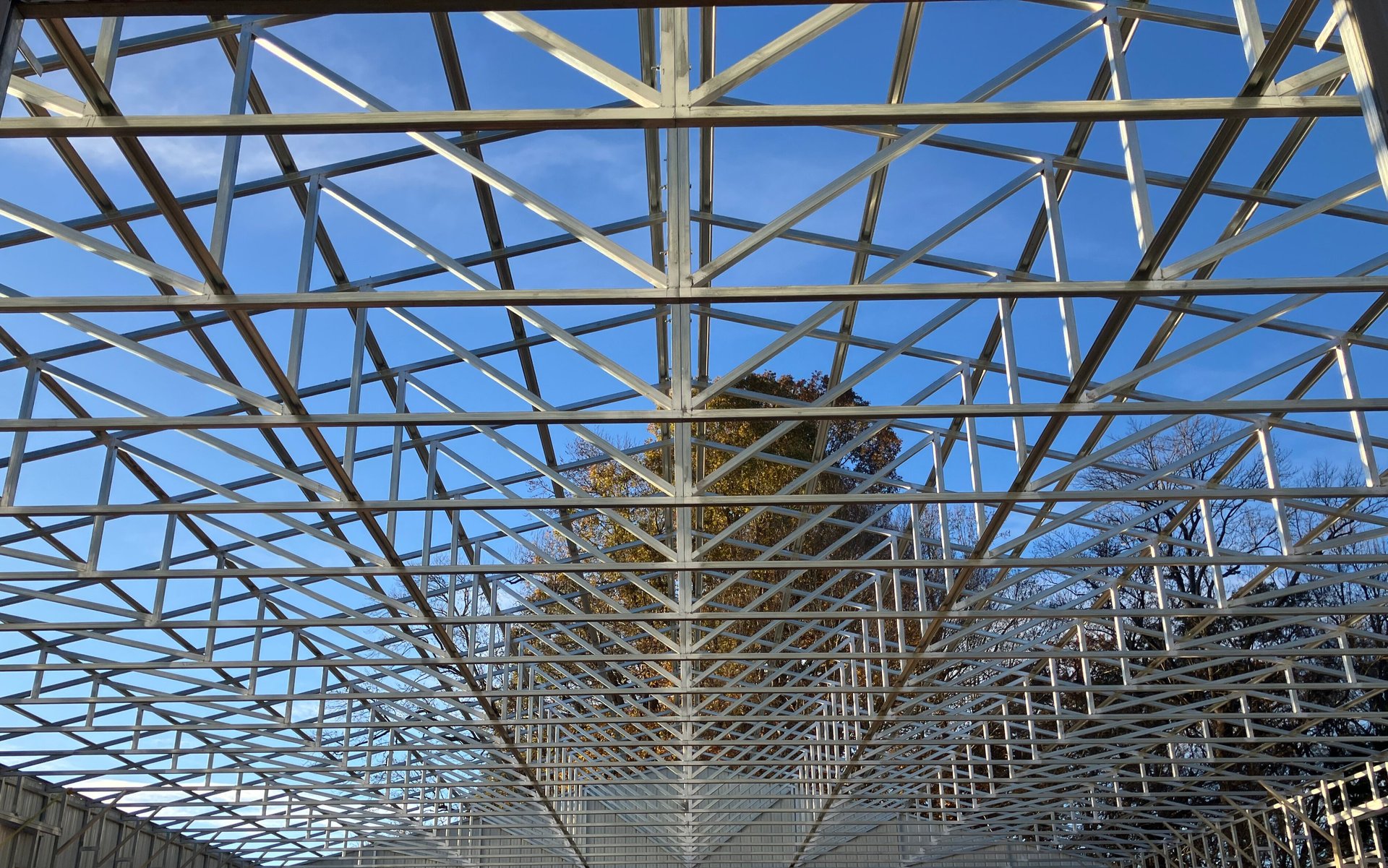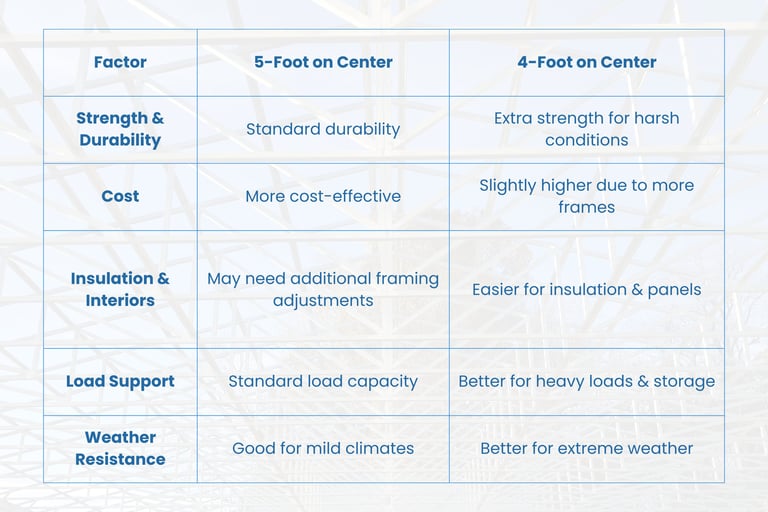When investing in a steel building, you’ll come across the terms “5-foot on center” and “4-foot on center.” These measurements might not mean much at first glance, but they play a crucial role in your building’s strength, cost, and overall performance.
So, what exactly do they mean? And how do they affect your steel building? Let’s break it down.
What Does "On Center" Mean?
The term "on center" (O.C.) refers to the spacing between the primary structural frames of your steel building. Specifically, it measures the distance from the center of one frame to the center of the next.
5-Foot on Center: Frames are spaced 5 feet apart.
4-Foot on Center: Frames are spaced 4 feet apart.
At first, one foot of difference may not seem like much, but in steel construction, this spacing significantly impacts structural integrity, load capacity, and even your overall costs.
5-Foot on Center vs. 4-Foot on Center – What’s the Difference?
Both frame spacing options are commonly used, but they serve different purposes depending on your building’s design, location, and intended use.
1. Strength & Structural Integrity
4-Foot on Center spacing results in a denser frame structure, increasing the building’s overall strength. This is especially important in areas prone to high winds, heavy snow loads, or seismic activity.
5-Foot on Center spacing is still strong and durable but may not be as resistant to extreme environmental conditions as a tighter frame spacing.
Best for: Buildings in regions with harsh weather, high snow loads, or where extra durability is required.
2. Cost Efficiency
5-Foot on Center spacing requires fewer frames, reducing material costs. This can lead to a lower overall building price while still maintaining durability.
4-Foot on Center spacing uses more steel, which can increase the upfront cost but provides added stability.
Best for: Those looking for a budget-friendly option without compromising too much on structural integrity.
3. Ease of Insulation & Interior Finishes
If you plan to insulate your steel building or add interior panels, 4-foot spacing often makes installation easier, as it aligns well with standard insulation sizes.
5-foot spacing can also accommodate insulation, but it may require additional framing adjustments to fit standard insulation widths.
Best for: Insulated buildings, offices, or workshops needing interior finishing.
4. Span & Load Distribution
4-Foot on Center spacing evenly distributes loads across more frames, which can be beneficial for buildings with heavy roof loads, storage facilities, or structures with additional weight-bearing requirements.
5-Foot on Center still provides reliable weight distribution but may not be ideal for buildings needing extra load support.
Best for: Warehouses, storage units, or buildings with heavy roofing materials.
Which Frame Spacing is Right for You?
Choosing between 5-foot on center and 4-foot on center comes down to your specific needs, location, and budget. Here’s a quick guide to help:





